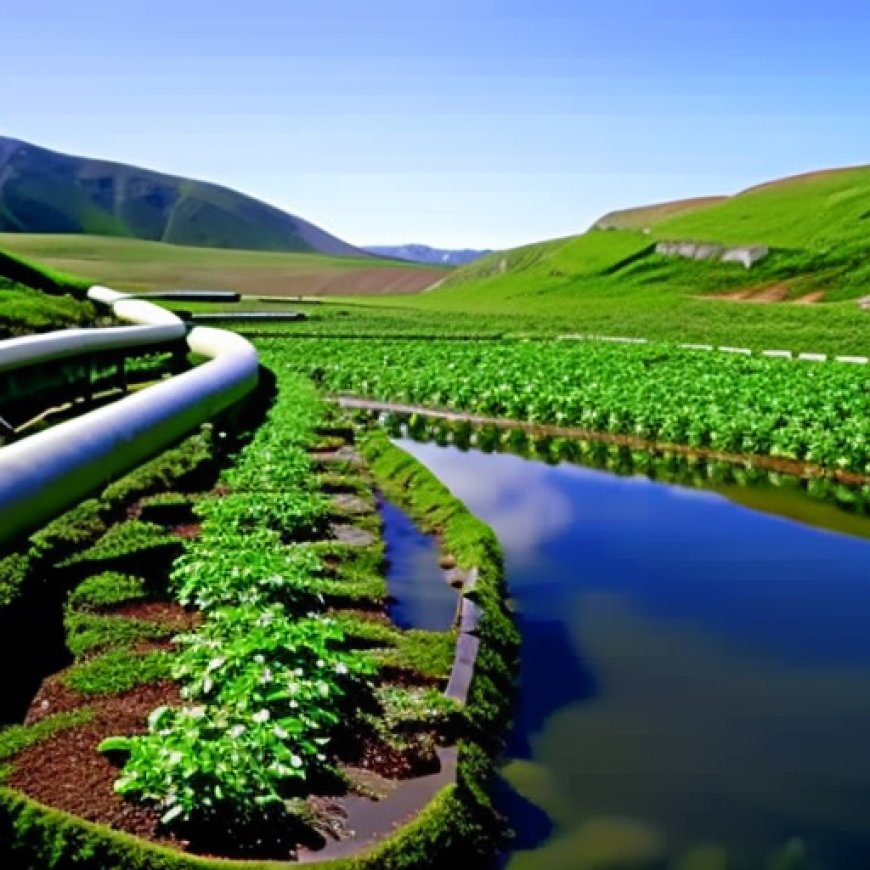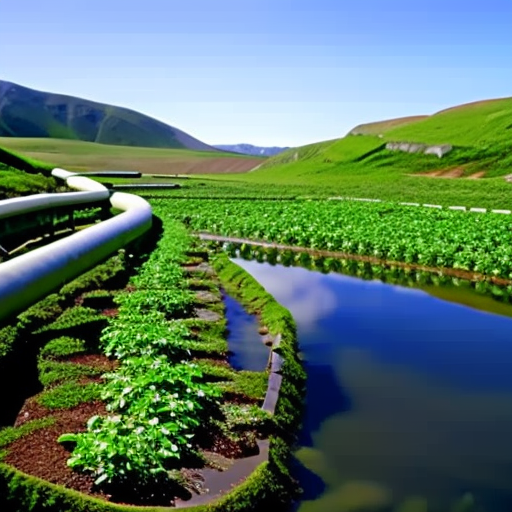Wastewater treatment: how to choose the most suitable technology? | Environmental XPRT
Wastewater treatment: how to choose the most suitable ... Environmental Expert


Sustainable Wastewater Treatment Solutions for Various Industries
Salher has been offering compact solutions for wastewater treatment for four decades, helping to protect the environment and facilitate the management of this type of waste without the need for large spaces or resources. This vast experience allows Salher to choose the most appropriate wastewater treatment technology in each case: aerobic biological treatment, MBR or MBBR systems.
Introduction
Wastewater is water that comes from production processes or human consumption and, therefore, has changed its physical, chemical, and microbiological characteristics. Selecting the most appropriate wastewater treatment technology will minimize the risk of problems and extend the life cycle of the wastewater treatment plant (WWTP). After identifying the origin of the wastewater and analyzing its composition and pollutants, Salher takes the following factors into account:
- Technical: Level of complexity of the operation and maintenance of the treatment plant.
- Spatial: Available land for the location of the sewage treatment plant.
- Economic: Construction and installation costs and the expenses derived from the operation and maintenance of the plant.
- Social: Local acceptance and awareness.
- Environmental: Environmental characteristics of the plant’s surroundings and the possible impact of the installation on it, as well as the study of the generation of sludge in the process.
The Most Efficient Wastewater Treatment Solution for Every Industry
In order to make progress in terms of sustainability, it is necessary for producers of industries that generate wastewater to be environmentally aware, so that they invest in treating it appropriately. At the same time, Salher promotes solutions to return this treated water to natural watercourses (river, sea, or underground) and, when possible, to reuse it for cleaning, irrigation, and toilet flushing in the industries themselves.
Salher analyzes the wastewater generated by all types of industries and studies the most appropriate configuration, which will depend, among other factors, on the pollutants in each type of industry:
- Agri-food industry: water from the dairy industry, water from the beverage production industry, and water from the food industry.
- Chemical and energy industries.
The water generated by the agri-food industry is characterized by high biodegradability, making it highly suitable for treatment with one of the many biological systems. Salher also designs and manufactures various preliminary elements for water conditioning, such as conventional pre-treatments (screens, screw screens, or rotary screens) and advanced primary treatments, such as its DAF systems.
Salher’s dissolved air flotation systems are effective in eliminating a large part of the contamination of organic matter in suspension and in oils and grease. In some cases, subsequent treatments can be eliminated depending on the required quality of the final discharge. However, if the water is discharged into a river or the sea, biological treatment needs to be incorporated in addition to the DAF system.
Other types of industries, such as metallurgy or the automotive industry, generate waste that is not highly biodegradable. For these waters, it is necessary to resort to physical-chemical treatment instead of biological treatment.
Salher works with different technologies available on the market for biological treatment:
- Activated sludge technology: There are many variants of activated sludge, but the most widespread for small and medium-sized plants is the low-loaded activated sludge or activated sludge with extended aeration.
- MBBR technology: Also called moving bed technology, where the bacterial population is attached to a plastic support material to develop its growth.
- Bio-membrane technology: MBR systems achieve optimum water quality for reuse.
The choice of each technology will depend on the factors mentioned above, although if there are no major restrictions, Salher recommends aerobic biological systems, that is, with oxygen supply. These systems are effective, simple, do not generate odors or toxic gases, and have more controlled processes in terms of performance.
Wastewater Reuse and Advanced Treatment Technologies
The reuse of wastewater from an industry is justified when the customer requires a high quality of liquid waste removal according to local regulations and when it is feasible to treat this water within its production process. Treated wastewater that has passed through a basic reuse system cannot generally be used again in the production processes of that industry.
However, this treated wastewater can be discharged unpolluted or reused for industrial flushing and cleaning, garden irrigation, and toilet flushing with relatively low costs. If the industry wishes to reuse this water for industrial purposes, more specific technologies would have to be applied to achieve the required quality. Salher offers various reuse technologies:
- Filtration: Salher works with ring filters and multimedia filters (sand, flint-anthracite, and activated carbon).
- Ultrafiltration.
- Nanofiltration, ideal for reusing water in cooling towers.
- Reverse osmosis: This technology retains dissolved salts, chlorides, phosphates, or nitrates present in the water. It is used when the water needs to retain particles to eliminate the concentration of dissolved salts or conductivity.
Urban Water Treatment and Reuse in Times of Drought
Municipalities have sewage and wastewater treatment networks to treat domestic water. The treatment process depends on the number of equivalent inhabitants, their BOD5 contribution (the biological oxygen demand for five days), and the local regulations in force. For small communities of up to 50 inhabitants, Salher designs and manufactures conventional septic tanks, under the UNE-EN 12566 standard, with the possibility of adding biological filters to increase their performance.
For populations of 50 to 2,000 people, Salher recommends a system that includes a manual or automatic pre-treatment, an organic grease separator chamber, and biological treatment such as OXIREC-C, OXIREC-D, MBBR systems, or MBR systems. With MBR technology, the water obtained is of a quality suitable for reuse, eliminating the need for tertiary equipment.
Salher considers factors such as the discharge destination (ground or natural watercourse), discharge limits, the need for water reuse, available area, and budget when determining the most suitable biological system for each case.
For wastewater treatment in seasonally populated rural areas or remote camp installations, Salher recommends installing low energy, practically maintenance-free equipment such as its LBR treatment plant, a recirculated bacterial bed reactor or biological filter.
For larger populations, Salher recommends including a PPC (compact pre-treatment plant) as pre-treatment and choosing plate tanks or civil works for the secondary treatment phase instead of compacting them inside a GRP tank.
In places where a high volume of water is consumed and easily reusable, such as hotels, spas and resorts, golf
SDGs, Targets, and Indicators Analysis
1. Which SDGs are addressed or connected to the issues highlighted in the article?
- SDG 6: Clean Water and Sanitation
- SDG 9: Industry, Innovation, and Infrastructure
- SDG 11: Sustainable Cities and Communities
- SDG 12: Responsible Consumption and Production
- SDG 13: Climate Action
- SDG 15: Life on Land
The article discusses wastewater treatment solutions for different industries, emphasizing the importance of environmental awareness and sustainability. This aligns with SDG 6, which focuses on ensuring availability and sustainable management of water and sanitation for all. The article also mentions the need for appropriate treatment technologies in different industries, connecting to SDG 9, which aims to build resilient infrastructure, promote inclusive and sustainable industrialization, and foster innovation. Additionally, the article highlights the impact of wastewater treatment on the environment and local communities, linking to SDG 11 (sustainable cities and communities), SDG 12 (responsible consumption and production), SDG 13 (climate action), and SDG 15 (life on land).
2. What specific targets under those SDGs can be identified based on the article’s content?
- Target 6.3: Improve water quality by reducing pollution, eliminating dumping, and minimizing the release of hazardous chemicals and materials.
- Target 9.4: Upgrade infrastructure and retrofit industries to make them sustainable, with increased resource-use efficiency and greater adoption of clean and environmentally sound technologies.
- Target 11.6: Reduce the adverse per capita environmental impact of cities, including by paying special attention to air quality and municipal and other waste management.
- Target 12.4: By 2020, achieve the environmentally sound management of chemicals and all wastes throughout their life cycle, in accordance with agreed international frameworks, and significantly reduce their release to air, water, and soil to minimize their adverse impacts on human health and the environment.
- Target 13.3: Improve education, awareness-raising, and human and institutional capacity on climate change mitigation, adaptation, impact reduction, and early warning.
- Target 15.1: Ensure the conservation, restoration, and sustainable use of terrestrial and inland freshwater ecosystems and their services.
Based on the article’s content, these targets can be identified as relevant to the issues discussed. The article emphasizes the need to improve water quality through wastewater treatment, upgrade infrastructure for sustainable industries, reduce the environmental impact of cities through waste management, achieve environmentally sound waste management practices, raise awareness about climate change mitigation, and ensure the sustainable use of ecosystems.
3. Are there any indicators mentioned or implied in the article that can be used to measure progress towards the identified targets?
Yes, the article mentions several indicators that can be used to measure progress towards the identified targets:
- Level of complexity of the operation and maintenance of the treatment plant (indicator for Target 6.3)
- Construction and installation costs and expenses derived from the operation and maintenance of the plant (indicator for Target 9.4)
- Local acceptance and awareness (indicator for Target 11.6)
- Generation of sludge in the wastewater treatment process (indicator for Target 12.4)
- Investment in treating wastewater appropriately (indicator for Target 13.3)
- Conservation, restoration, and sustainable use of ecosystems (indicator for Target 15.1)
These indicators reflect the factors mentioned in the article that are relevant to measuring progress towards the identified targets.
4. Table: SDGs, Targets, and Indicators
| SDGs | Targets | Indicators |
|---|---|---|
| SDG 6: Clean Water and Sanitation | Target 6.3: Improve water quality by reducing pollution, eliminating dumping, and minimizing the release of hazardous chemicals and materials. | Level of complexity of the operation and maintenance of the treatment plant |
| SDG 9: Industry, Innovation, and Infrastructure | Target 9.4: Upgrade infrastructure and retrofit industries to make them sustainable, with increased resource-use efficiency and greater adoption of clean and environmentally sound technologies. | Construction and installation costs and expenses derived from the operation and maintenance of the plant |
| SDG 11: Sustainable Cities and Communities | Target 11.6: Reduce the adverse per capita environmental impact of cities, including by paying special attention to air quality and municipal and other waste management. | Local acceptance and awareness |
| SDG 12: Responsible Consumption and Production | Target 12.4: By 2020, achieve the environmentally sound management of chemicals and all wastes throughout their life cycle, in accordance with agreed international frameworks, and significantly reduce their release to air, water, and soil to minimize their adverse impacts on human health and the environment. | Generation of sludge in the wastewater treatment process |
| SDG 13: Climate Action | Target 13.3: Improve education, awareness-raising, and human and institutional capacity on climate change mitigation, adaptation, impact reduction, and early warning. | Investment in treating wastewater appropriately |
| SDG 15: Life on Land | Target 15.1: Ensure the conservation, restoration, and sustainable use of terrestrial and inland freshwater ecosystems and their services. | Conservation, restoration, and sustainable use of ecosystems |
Behold! This splendid article springs forth from the wellspring of knowledge, shaped by a wondrous proprietary AI technology that delved into a vast ocean of data, illuminating the path towards the Sustainable Development Goals. Remember that all rights are reserved by SDG Investors LLC, empowering us to champion progress together.
Source: environmental-expert.com

Join us, as fellow seekers of change, on a transformative journey at https://sdgtalks.ai/welcome, where you can become a member and actively contribute to shaping a brighter future.







